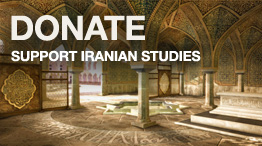Physiognomy, that is, the assessment of character based on scrutiny of an individual’s physical features, especially those of the face, was regarded in the medieval Islamic world as a science and included in the classifications of sciences, usually under the natural sciences or branches of natural philosophy, and sometimes together with the occult sciences, such as astrology, alchemy, and various types of divination. The science of physiognomy (‘ilm al-firasa) had its roots in Late Antiquity in the Greek treatise by Polemon, known in the Islamic world as Afilamun, the “master of physiognomy.” This “Greek,” or judicious (hikmi), type of physiognomy was construed as an inferential process based on careful observation, analogy, and experiential verification. It was historically closely associated with medicine, as every physician had to be a physiognomer to some extent, as in the case of Hippocrates, who was regarded in Galenic medicine as the founder of physiognomy. In addition to the “Greek” type of physiognomy, an “Islamic” (shar‘i) physiognomy developed, largely under Sufi influence, that did not even require scrutiny of external physical signs. Endorsed by a rare hadith that read “Beware the firasa of the Muslim believer, for he sees with the light of God,” this type of physiognomy was regarded as an intuitive insight granted Sufi masters and Muslim divines as a charismatic gift. The medieval Persian mirrors for princes often included a chapter or section on physiognomy, which was deemed indispensable in choosing courtiers, slaves, administrators, and military commanders. After providing a brief history of the Arabic and Persian treatises on the science of physiognomy that have a bearing on Islamic advice literature, the paper will examine the presentation of physiognomy in several Persian mirrors for princes: the eleventh-century Qabus-nama by Kay Ka’us, the twelfth-century Persian translation of Kalila va Dimna by Nasrullah Munshi, and Kashifi’s Akhlaq-i muhsini composed in the late fifteenth century, with a view to comparing their particular foci and narrative strategies. While some of the anecdotes related by these authors are of a cautionary nature, warning the reader not to set much store by external physical signs in the assessment of character, other observations they make of a more philosophical nature suggest that the intuitive, “Islamic” type of physiognomy was also shared by kings, who, according to medieval Islamic political theory, ruled by divine election.
- About
- Membership
- Publications
- Conferences
- Resources
- Awards
- Saidi-Sirjani Book Award
- AIS Book Prize
- Latifeh Yarshater Award
- Lifetime Achievement Award
- Best Dissertation Award
- Yarshater Book Award
- The Parviz Shahriari Book Award
- Princeton Book Award
- Hamid Naficy Book Award
- Diaspora Studies Dissertation Award
- Nemati Book Award
- Conference to Journal Paper Award
- Graduate Student Research Award
- Mohammad Amini Memorial
- Mentorship Award
- Initiatives
